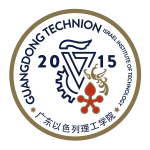
Physics and Chemistry on Solid Surfaces Seminar Series
Talk1
A New Degree-of-freedom for Modulating Two-dimensional Materials: Interlayer Interaction
Speaker
Prof. Jingsi Qiao (Beijing Institute of Technology)
Host
Prof. Kai Huang (GTIIT, Chemistry)
Time and Location
Jan. 14 2022, Friday, 10-11am, E510 (Education Building, 5th floor)
Abstract
Black phosphorus, PtS2, PtSe2, Tellurium, and other two-dimensional (2D) materials with strong interlayer interaction have many excellent properties, attracting increasing interests in condensed matter physics, materials science, chemistry, nanotechnology, biomedicine, and other fields. Here, strong interlayer coupling in these materials defined as “covalent-like quasi-bonding” (CLQB) induces covalent-like features to the interlayer and determines the fundamental properties of the materials, e.g. layer-dependent geometric structure, electronic, transport, optical, vibrational properties, etc. The success of these 2D materials shed light on the significance of interlayer coupling.
Twisting the angle between 2D layers could modulate the interlayer potential and govern the novel electronic, optical and transport properties of the materials. Recently, tunable correlated insulators, unconventional superconductivity were found in the special Moiré homo-structure, magic angle twist bilayer graphene. However, the fundamental properties of twisted homo- transition metal dichalcogenides (TMD) bilayers need to be unveiled. Here, we experimentally and theoretically identified the Moiré features in commensurately twisted 2D materials bilayers. These results guide to understand and tune the physical properties of 2D materials.
Talk2
Strain tunability in layered two-dimensional magnets
Speaker
Prof. Wei Ji (Renmin University of China)
Host
Prof. Kai Huang (GTIIT, Chemistry)
Time and Location
Jan. 14 2022, Friday, 11am-12pm, E510 (Education Building, 5th floor)
Abstract
Two-dimensional magnetic materials have attracted tremendous attention since their experimental isolation and measurements in 2017. It becomes clearer that in-plane strain plays a paramount role in determining magnetic properties of two-dimensional layers. In the talk, I will present our recent results discussing the roles of external and epitaxy strains in tuning intra- and inter-layer magnetism and resistivity to in-air oxidation for Fe3GeTe2, CrSe2, CrTe2 and VCl3. Among them, at least, two mechanisms were revealed for the intra-layer tunability, namely angle-determined in-plane ferro- (FM) and anti-ferro-magnetic (AFM) super-exchanges and lattice-constant governed orbital order in open-shelled magnets. In terms of interlayer tunability induced by in-plane strain, a Bethe-Slater curve (BSC) like and its reversal behaviours were uncovered.
Talk3
Environmental SEM as a Surface-Sensitive Tool to Study Reaction Dynamics
Speaker
Prof. Zhu-Jun Wang (ShanghaiTech University)
Host
Prof. Kai Huang (GTIIT, Chemistry)
Time and Location
Jan. 14 2022, Friday, 2-3pm, E510 (Education Building, 5th floor)
Abstract
Whether we want to study the synthesis, reactivity or ageing of catalytic materials, only experiments performed during the ongoing processes provide data to establish reliable structure-function relationships. Consequently, in the recent years, there has been a growing interest to study catalytic systems in their working state and to develop in situ techniques to approach the experimental conditions encountered in applied formulations of catalysts. Moreover, catalytic applications involve systems composed of active elements with sizes spanning from the nm- to the mm-scale and a multiscale approach is then necessary to get a more complete picture of the processes at the relevant scales.
In this frame, environmental SEM allows the study of samples with various morphologies, under gas pressures up to hundreds of Pa and temperatures up to 1500°C. Recently, this technique has been used to study surface dynamics and the growth of single layers of graphene at different scales. Indeed, during the formation of graphene via catalytic chemical vapor deposition, the variation in the work function of the substrate and attenuation of the SE emission by even monolayers of graphene is sufficient to be detected. To extend the capabilities of the ESEM technique to the study of gas/solid interactions, the system must be sensitive enough to differentiate work function changes due to gas adsorption. For this, we imaged Pt surfaces during the NO2+H2 reaction by ESEM. This reaction was previously studied on a single nanoparticle of Pt by field emission techniques, and the conclusions from these experiments are as follows: adsorbed NO2 species are known to increase the work function of Pt, and nonlinear dynamics can emerge during the reaction, without oxidation of the catalyst. Therefore, if nonlinear behaviors occur during the experiments, it will be a strong indication that surface reaction is happening rather than surface oxidation, which will prove the surface-sensitivity of the ESEM.
Environmental SEM experiments were performed in a modified commercial ESEM equipped with a heating stage, gas feeding system and mass spectrometry for analysis of the products of reaction. Pt foils and single crystal were cleaned ex situ, and then annealed under hydrogen environment prior to exposure to reactive mixture of gases. The base pressure of the system corresponds to ≈10-6 Pa, and then NO2 and H2 gases were injected with mass flow controllers at different pressures ranging from 10-3 to 20 Pa. Both ETD and LFD detectors were used to follow the reaction dynamics.
The introduction of pure NO2 in the ESEM chamber allows to observe changes in the brightness due to the increasing work function of Pt in presence of NO2. After addition of H2, nonlinear behaviors in the form of spiral patterns can be observed for specific reaction conditions. A brightness analysis of the reaction pattern allows to distinguish 3 different brightness levels on a single propagating wave. This is not only the proof that ESEM is indeed a surface-sensitive technique that can be used to probe gas-surface interactions, but also that ESEM can differentiate different adsorbates species as a function of their effect on the work function. Furthermore, it is possible to study the various reaction behaviors, the structure sensitivity of the reaction, the spillover between different facets, and how the presence of boundaries affects the reactivity.
Spiral patterns were observed on both Pt single crystal and Pt foils, on regions as large as 100 µm and over four orders of magnitude in pressure. This means that ESEM can be used to observe similar phenomena over different pressure conditions and on samples of increasing complexity, allowing to reduce the pressure and materials gaps. This also demonstrate the robustness of the NO2+H2 system that can be used as a model reaction to study surface/reactivity relationships.
Speakers
-
Prof. Jingsi Qiao
-
Prof. Wei Ji
-
Prof. Zhu-Jun Wang
Local Time
- Timezone: America/New_York
- Date: 13 - 14 Jan 2022
- Time: 9:00 pm - 2:00 am
